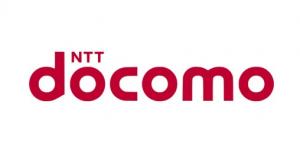NTT DoCoMo
We’re Updating Our Profiles Section
Stay tuned for all new and updated exclusive profiles on companies and organizations involved in the ecosystem.

No one can say Japan’s dominant mobile operator, NTT DoCoMo, lacks vision or the determination to transform the Japanese market.
DoCoMo introduced the world’s first commercially successful mobile Internet service, i-mode in 1999, and the world’s first 3G service in 2001. And then in 2004, it launched the first nationwide rollout of contactless wallet phones.
The following year, it made its intentions for its bold move into mobile payment crystal clear by investing nearly US$1 billion in Japan’s No. 2 credit card company at the time, Sumitomo Mitsui Card. Then in December 2005, DoCoMo launched its own credit payment scheme, iD, followed by its payment application, DCMX, in April 2006. At the same time, DoCoMo set about giving subscribers places to tap their phones to pay with iD, investing tens of millions of dollars more for minority stakes in convenience store chains. The telco also fronted the cost of contactless terminals for smaller merchants.
DoCoMo’s business model for the payment service is the same as that of credit card companies it now competes with, such as as JCB and Visa, as well as Japanese banks: It collects transaction and brand fees every time subscribers tap their phones to pay.
The results of the DoCoMo-led rollout of contactless phones has been impressive, at least on the surface: Today, more than 60 million phones in Japan pack the contactless FeliCa chip, which comes from DoCoMo’s joint venture partner Sony Corp. The chips and associated secure memory can support a range of payment, ticketing and other applications.
DoCoMo accounts for roughly 60% of the phones, but the total also takes in handsets sold by DoCoMo’s mobile competitors, KDDI and Softbank Mobile—which have been compelled to follow their larger rival, though they have no business model of their own for the contactless services, except to reduce churn.
At the same time, the telcos have to cover significant licensing fees passed on by handset makers from the DoCoMo-Sony joint venture, FeliCa Networks. This is one reason KDDI and Softbank want to bring less-proprietary NFC to Japan. Commuter-rail operator East Japan Railway, or JR East, owns a small share of FeliCa Networks.
Thanks in large part to its tens of millions of U.S. dollars worth of investment in retail chains, DoCoMo has managed to get the iD m-payment brand accepted at scores of convenience stores and other merchant locations–450,000 terminals in all. It says 10 million subscribers are registered for DCMX.
All this is widely interpreted in the West as a rousing success, but in fact, DoCoMo’s gamble has not yet paid off.
Mobile-savvy Japanese consumers have yet to fully take to the wallet phones. Few buy the phones for the FeliCa chip, which comes as a default feature on most models, as dictated by DoCoMo and the other operators.
Moreover, the vast majority of DoCoMo’s registered DCMX “members” subscribe to DCMX-mini, an easy and free sign-up process for subscribers, enabling them to charge only up to about $US114 per month on their phone bills.
And while use of Osaifu-Keitai appears to be growing, by some estimates only 10% of Japanese subscribers with wallet phones use them with any regularity. A survey by goo Research in late September 2009 showed a little more than 16% of more than 1,000 Internet respondents said they had used the phones for wallet transactions. DoCoMo does not release transaction figures.
Japanese subscribers in the past have expressed security concerns about having so many payment applications on their phones. That is despite extra security measures DoCoMo had added. Users also face a chore to transfer the services when they change handsets since the applications reside on an embedded chip. And consumers in Japan still overwhelmingly use cash for purchases.
But while use of applications such as iD and Mobile Suica, the wallet-phone version of the popular contactless fare-collection card from JR East, have been disappointing, some applications appear to be popular, such as a loyalty and food-ordering service at McDonald’s restaurants in Japan. The service, called "Kazasu Coupon" is part of a joint venture between DoCoMo and McDonald’s Japan that combines the Internet with the phone’s contactless interface.
And consumers also appear to be using single-application contactless cards more and more for retail purchases in Japan’s crowded “e-money” market. These payment applications are already available on wallet phones, and subscribers may one day decide to tap their multiapplication phones instead of cards to pay.
Though DoCoMo is not as keen as KDDI and Software to bring NFC to Japan, even the giant telco has resigned itself to the move to NFC to reduce its dependence on Sony’s FeliCa technology and open up the Japanese handset market to more international manufacturers. It also wants to enable roaming customers to tap their wallet phones outside of Japan.
DoCoMo in February 2011 confirmed plans to move to standard NFC around the end of 2012 and will participate in an NFC cross-border project with South Korean telco KT Corp. It plans to make its NFC phones backward compatible with the massive FeliCa infrastructure in Japan by embedding an extra FeliCa secure chip in the phones and later by putting FeliCa on NFC-enabled SIM cards.
| Customer Base | 2010* | 2009 | 2008 |
| Subscribers |
57.2 | 55.2 | 53.9 |
| Market Share |
48.8% | 50.3% | 51.3% |
| Subscribers in millions for Oct. of year indicated *Subscriber figures for Dec. 2010, market share for Jan. 2011. Source: Telecommunications Carriers Association |
|||
<!--[if gte mso 10]>
Change*
| iD Brand In Japan | 2009 | 2010 |
| Retail Terminals | 420,000 | 447,000 |
| For Sept. 2009 and Nov. 2010 | ||
KDDI, Softbank Mobile












